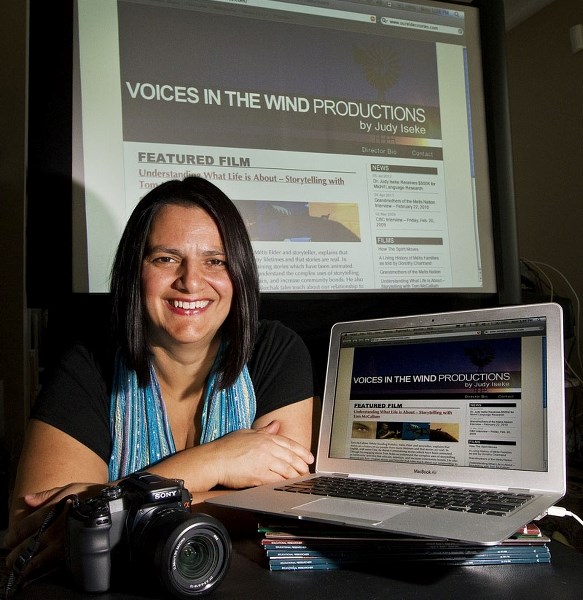Most city residents will give you a funny look if you say “BooĹ„zhuur” to them today. That's because it's a word (“hello”) in Michif – a language spoken by less than 600 people. Yet you would have heard it everywhere in Alberta 150 years ago, says Judy Iseke, the Canada Research Chair in indigenous knowledge at Lakehead University and a St. Albert resident.
Most city residents will give you a funny look if you say "BooĹ„zhuur" to them today. That's because it's a word ("hello") in Michif – a language spoken by less than 600 people.
Yet you would have heard it everywhere in Alberta 150 years ago, says Judy Iseke, the Canada Research Chair in indigenous knowledge at Lakehead University and a St. Albert resident.
"It was the language of commerce and communication," she says, and was important to Métis culture. "But it is a language that's severely threatened."
Iseke is giving a free talk in Edmonton this Friday on her research into the Michif language. Last summer, she spoke to Métis elders across the province and recorded them as they told stories in Michif – stories she plans to post online.
Michif is what linguists call a "contact" language, Iseke says, as it emerged when French-speaking traders made contact with Cree aboriginals early in Canada's history.
"It's one of the most unique languages in the world," she adds, as it's a combination of two languages – French and Cree – neither of which is dominant. (Contact languages usually have a dominant tongue.)
"It's neither French nor Cree. It is both," she said.
It also tends to vary by region.
"The further east you go in the Prairies, the more French you find in the language," she said.
Some variants will feature words from English, Ojibwa or Mohawk.
Most St. Albert residents spoke Michif and four to five other languages back in the 1800s, as most of them were Métis, says Sharon Morin, head of aboriginal programming at the MusĂ©e HĂ©ritage Museum.
Michif tended to be more "French" here than elsewhere in Alberta, she continued, likely due to this region's francophone roots.
"In Lac Ste Anne, for milk, they'd say 'le crÄŤme' (French), but up in Slave Lake, the Métis would say 'tohtosapoy' (Cree)."
Michif also has many unique words that blend French and Cree, says Nicole Rosen, a professor of modern languages at the University of Lethbridge who is developing a Michif dictionary.
Examine a statement like "Noohtee minihkweeyaan diloo" ("I want to drink water"), for example, and you'll find traces of the Cree words "nĂ´hte" (want) and minihkwewin (drink), as well as the French word for water ("de l'eau").
Michif was swamped out by the big wave of anglophones that arrived later in Canada's history, Iseke says. The residential school system also punished students when they spoke native languages like Michif, further suppressing it. Today there are maybe 50 Michif speakers in Alberta, none of whom are under 60.
"When the world loses a language, we lose the knowledge and wisdom that's contained within it," Iseke says. The Métis have been here for centuries, and their stories may contain information valuable for today's environmental challenges, she added.
Iseke's research aims to develop teaching resources that can be used to spread Michif to new generations.
The Maori in New Zealand and the Innu in northern Canada have helped restore their native tongues through "language nests," an immersion-based approach to language instruction in which very young children interact with native speakers, Iseke says.
"Preschool children are the best learners of language," she says, so they pick up the new words fast. She hopes a similar strategy could be done with Michif.
This is a vital part of Métis culture that must be preserved, Morin says.
"It's a language not even the Métis people know about," she said.
Iseke's talk is at the Remedy Café in Edmonton this March 15 at 2 p.m., and will consist of a brief presentation followed by a Q & A. Call Kelly Loeffelmann at 780-492-2556 for details.
Iseke's research can be seen at ourelderstories.com.
